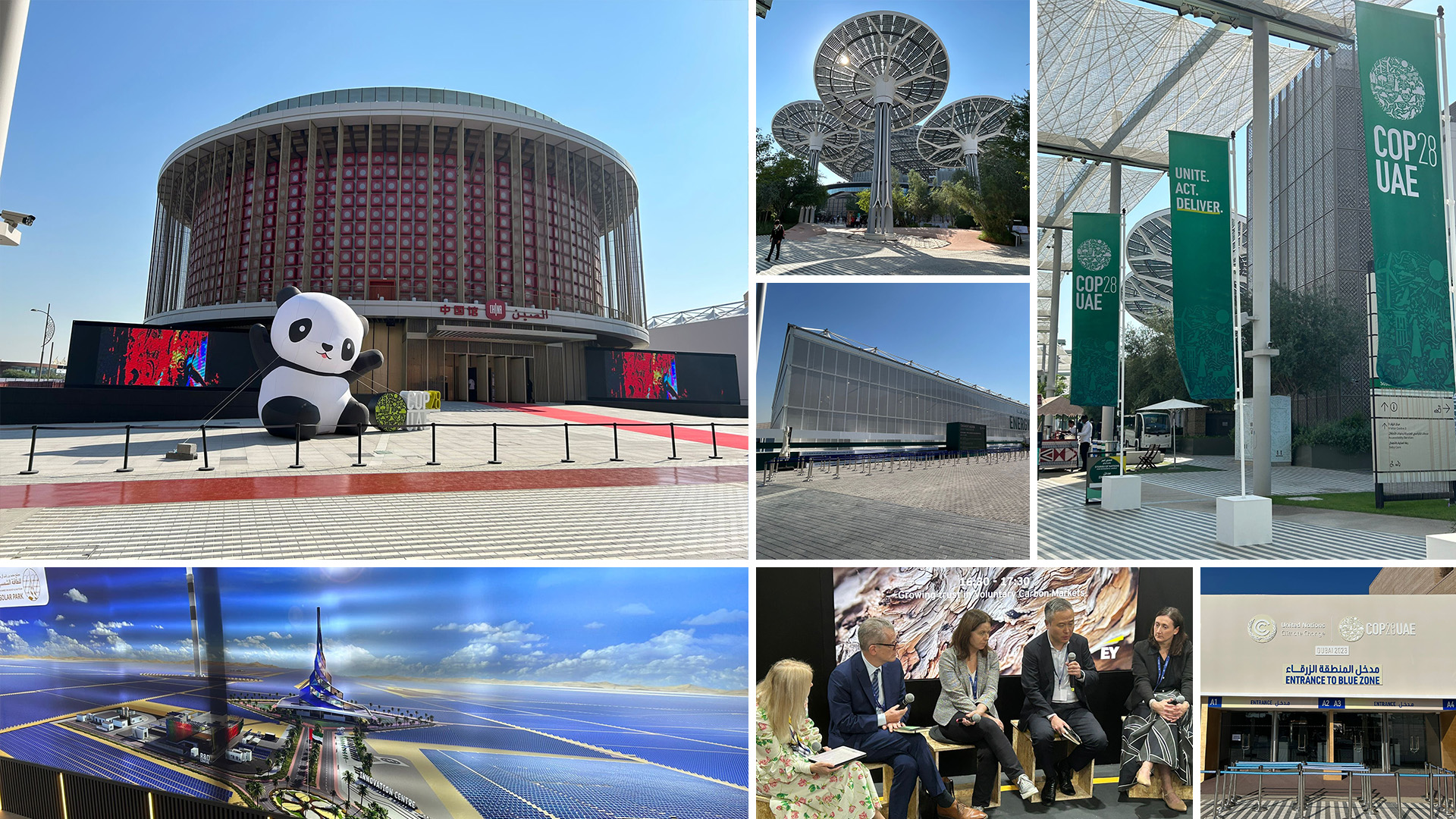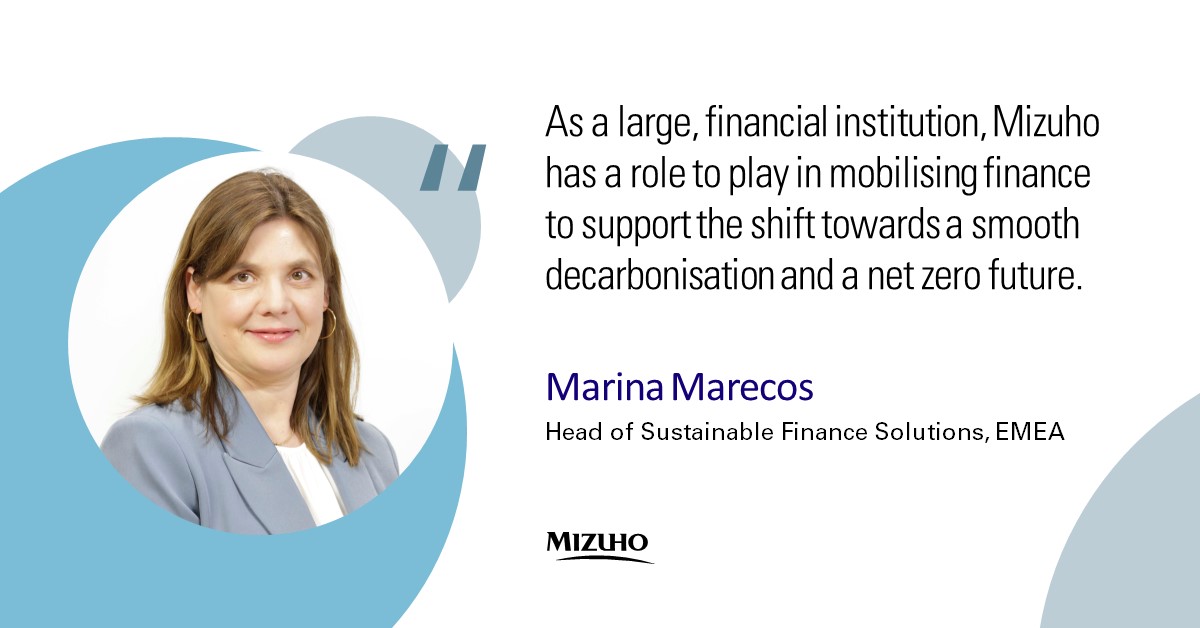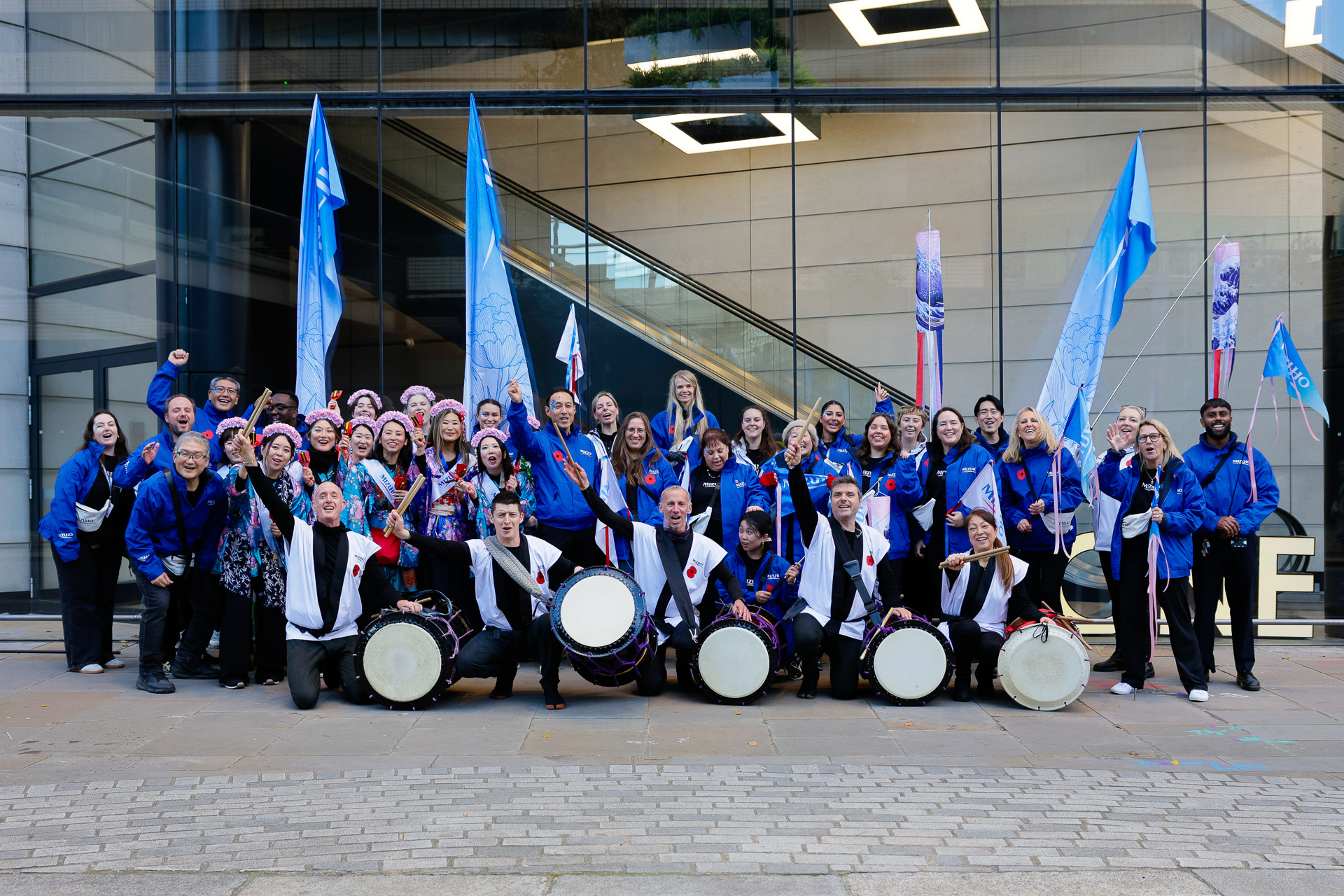COP28 was hosted by the UAE taking place from 30 November to 12 December 2023, at Expo City, Dubai. COP28 marks the conclusion of the first Global Stocktake, which is held every five years to assess global progress toward the goals of the Paris Agreement. Mark Wheatcroft, Head of Sustainable Finance Americas & EMEA, was in attendance alongside Marina Marecos, Head of Sustainable Finance Solutions EMEA and other Mizuho delegates from across the world and shares his views on the event.
Expectations were running high as the Conference of the Parties 28 event loomed at the end of November, especially following the extreme weather conditions around the globe in 2023. The issuance of the final instalment of the Intergovernmental Panel in Climate Change’s (IPCC) Sixth Assessment Report (AR6) in March 2023 had outlined the consequences of rising greenhouse gas emissions across nearly 8,000 pages and endorsed through scientific evidence and the need to limit global warming any further.
It was a real honour to attend with Marina Marecos, Head of Sustainable Finance Solutions EMEA as well as colleagues from Japan andthe UAE for such an important global conference with climate change and the broader sustainability topics at the core. With 97,372 registered attendees, it was the largest and most inclusive COP ever to be staged, with three times the attendees at COP27 in Sharm El-Sheikh.
The site that hosted the event was built to support Dubai’s successful bid to host the World Expo in 2020, spreads across 438 hectares (over 1000 acres) and was constructed very much with a sustainability theme embedded within it. The existing areas of Mobility, Opportunity and Sustainability were ready made to welcome more than 150 heads of state of governments, politicians, international organisations, civil society, business, philanthropy and a large number of those representing youth and indigenous groups which spoke to this being a more inclusive COP.

It was fascinating to be able to access all areas and soak up the experience from all angles. One moment I was being passed by a delegation from a large nation, the next by a long line of school children visiting some of the major exhibits, eyes wide open to the scale of the structures. The organisers had also done what they could to protect against the unseasonal heat with temperatures exceeding 30C every day, and was proving a little uncomfortable in the standard suit and tie.
However, the atmosphere was one of positivity as attendees raced between meetings or from one negotiating table to another, from the Blue Zone to the Green Zone and back again.
Access all areas experience
The Blue Zone is where all the official sessions and the heavy negotiating took place. Only Party delegations, Heads of State, admitted observers and the accredited press can enter. As part of the Japanese state delegation we were able to enter this space.
The Green Zone is a space for youth representatives, artists, businesses, regional and local decision makers and many other civil societies, to discuss, present and exchange ideas and solutions for a net zero future. It was here that we had a number of client meetings, speaking with Mizuho’s corporate clients and financial institutions from across the world.
In between meetings we took the opportunity of taking in the Climate Finance Hub, which was a pavilion holding trade stands from many of the regional banks and sponsors, as well as some of our larger, global peers (Citigroup, JPMorgan and HSBC) who had rooms available to host client meetings. In amongst the stands, panel discussions were taking place across many climate finance related aspects, whether that is the pure play green financing, financing of transition activities or even financing nature.
The most impressive pavilion was the Energy Transition Hub which was showcasing some innovative new, climate disruptive technologies, or showing large scale developments that are under construction. One amazing example was the Mohammed bin Rashid Al Maktoum Solar Park. It is the largest single-site solar park in the world. It has a planned production capacity of 5000 MW (megawatts) by 2030, with investments totally approximately US$ 10 billion. It will save over 6.5 million tons of carbon emissions annually once it is completed.

There were others showcasing small modular nuclear reactors, clean hydrogen, battery storage and the more familiar renewables of wind and solar. It is clear that incredible sums of money are being spent to find the solutions we will need to decarbonise a real-world economy, albeit there needs to be more.
The role of the finance sector
In our own meetings, our Chief Sustainability Officer and Head of Sustainable Business Promotion were talking about the role that Mizuho plays in decarbonising the Japanese and Asian economies, where the path to net zero looks different to other jurisdictions, as the transition to renewables is made more challenging by geological positioning, geography and limited land mass to build solutions at scale.
As a large, financial institution, Mizuho has a role to play in mobilising finance to support the shift towards a smooth decarbonisation and a net zero future. All of these commitments will require financing, including structuring and advising, and Mizuho will support its clients’ ESG strategies and take advantage of this opportunity.

Agreements & Outcomes of the COP
Whilst we met clients the news flow on commitments, agreements and new ventures continued to pour through. There was early momentum with agreement on the Loss & Damage fund which had been discussed for many years, but without action. Now there is action and a plan to be worked out on operationalisation with the World Bank taking the helm for the first five years.
There were pledges to triple renewable energy and double energy efficiency globally, support to reduce methane and other non-CO2 emissions, a charter to decarbonise today’s energy systems endorsed by 52 companies that cover 40% of global oil and gas production, talks to reform multi-lateral development banks to release more international financing, a focus on food and water, health, relief, recovery and peace, nature and biodiversity, preservation of cultural heritage, youth, indigenous people and much more.
As the news filtered through, the excitement and passion only increased to work harder to establish real solutions to these climate problems, to ensure finance is available for mitigation and adaptation and that no one is left behind.
As I reflect on COP28 I do so positively. Whilst there remains an enormous amount of work to be done, the attendance levels suggest that there is a real collaborative spirit and a realisation that it requires the work of many, and that work needs to bring all stakeholders together.
COP28 will be judged by the wording within the final agreement. With the reference to “phasing down” fossil fuels, for many this is the “beginning of the end” by outlining the end of the fossil fuel era and looking ahead to a quick, just and equitable transition, supported by large emissions cuts and the scaling up of finance. It was exciting to be at such an event that attracted so much of the world’s attention and resulted in a ground-breaking outcome.
Looking ahead, COP29 will focus on climate finance and progress on the size of funding and innovative financial structures to combine public and private financing – this will be an exciting event for Mizuho as we work closely with our clients around how we can best finance, structure and provide advice in line with their ESG strategies. As a global financing powerhouse, and natural East-West gateway in EMEA, it is important that we are present at such events in the future. As the UN Climate Change Executive Secretary Simon Stiell said: “Now all governments and businesses need to turn these pledges into real economy outcomes, without delay”.



